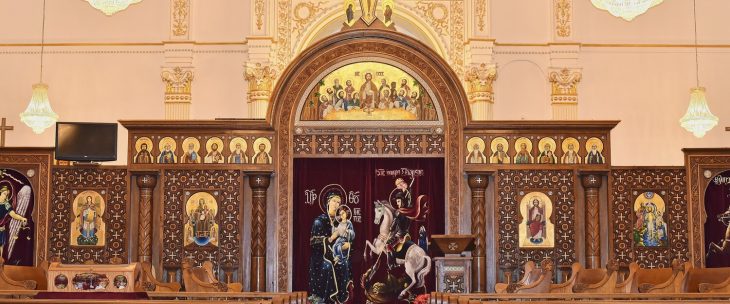In the annals of Christianity, the Coptic Church stands as a beacon of richness and resilience, reflecting the profound history of Egypt where it originated. For many, the mere mention of the Coptic Church conjures vivid images of intricately decorated altars, hypnotic liturgies, and the unwavering spirit of a community that has endured through centuries of change and challenge. This ancient Christian tradition is more than mere theology; it encapsulates a distinct cultural identity and a spiritual heritage deeply intertwined with the soil of Egypt.
The history of the Coptic Church can be traced back to the apostolic era, attributed to Saint Mark the Evangelist, who is believed to have brought Christianity to Egypt in the first century AD. This event marked the beginning of an indigenous Christian community that would grow, flourish, and later, face trials that would shape its character and doctrinal tenets. The Coptic Orthodox Church, as it became known, embodies not just a faith system but a lineage, representing one of the oldest Christian denominations in existence today.
The term “Copt” is derived from the Greek word “Aigyptos,” referring to Egypt, thus signifying Egyptian Christians. This self-identification reflects a profound connection to the land and culture, which has been a bastion of anchor amidst the shifting sands of political and religious upheaval. Coptic Christians have faced persecution throughout their history, particularly during the Islamic conquests starting in the 7th century, leading to a significant decline in their population and influence. Despite this, the Coptic Church has sustained its unique practices and beliefs, akin to the way a palm tree withstands desert storms.
Central to the Coptic tradition is its liturgical life. The Coptic liturgy is characterized by its ethereal nature, which resonates deeply with its followers. It employs the Coptic language, a direct descendant of ancient Egyptian, alongside Arabic in contemporary worship. The structure of the Divine Liturgy is replete with rich symbolism and ritual, leading congregants on a transcendent journey that emphasizes not just communal worship but a personal encounter with the divine.
Coptic ecclesiology, or the structure of the Church, also merits exploration. The Coptic Orthodox Church is governed by a hierarchy, with the Pope of Alexandria at its apex, an office considered to be one of the oldest in Christendom. The Pope serves not merely as a spiritual leader but as a shepherd overseeing a flock that spans across the globe, with a notable diaspora in countries like the United States, Canada, and Australia.
The sacraments hold a crucial place within Coptic Christian life, emphasizing the material route to grace and divine communion. The sacraments, notably baptism and the Eucharist, are seen as transformative acts that forge a deeper connection with Christ. This view aligns with the theological understanding that the physical world is imbued with spiritual significance, an idea resonant with creation’s sacrality inherent in both Old and New Testament narratives.
Moreover, Coptic art and architecture illustrate the church’s theological outlook and cultural context. Coptic churches are often adorned with striking iconography, depicting saints, biblical events, and the Holy Family. These works not only serve as religious representations but as windows into the souls of the believers, inviting them to contemplate the divine mysteries. The architectural style, characterized by its unique domes and rich ornamentation, reflects a synthesis of Pharaonic, Byzantine, and Islamic influences, illustrating the notion that faith is a living expression of culture.
To delve deeper into the appeal of the Coptic Church is to acknowledge the enigmatic fabric that binds faith, history, and culture. A common observation about Copts is their deep-seated sense of identity and community, often leading outsiders to ponder the reasons behind this cohesion. One could argue that this unity stems from the shared experiences across generations—persecution has forged a strong communal bond. The church, therefore, acts not only as a spiritual haven but also as a fortifying fortress of identity in a rapidly changing world.
The notion of martyrdom is another facet that enhances the allure of Coptic Christianity. Historical accounts, as well as contemporary realities faced by Coptic Christians, reveal a stalwart faith that thrives even in the face of extreme adversity. The recent attacks on Coptic churches highlight the resilience found within these communities, echoing the sacrifices of ancient martyrs who first upheld their faith. Their stories inspire many, providing a vivid lens through which one can see the intertwining of faith with the broader tapestry of human experience.
Today, Copts continue to navigate their place in the Egyptian landscape, negotiating their status amidst ongoing social and political changes. The Coptic Church is not only a remnant of the past; it remains a living institution that engages with contemporary issues. From interfaith dialogue to charitable outreach, the church seeks to embody the Gospel’s messages of love, peace, and reconciliation—a challenge worthy of its ancient lineage.
As we reflect on the Coptic Church, it becomes evident that its essence transcends geographical and cultural boundaries. It embodies a tapestry woven from centuries of history, rich spiritual traditions, and a steadfast community spirit. The fascination with this ancient Christian tradition lies not solely in its profound heritage but in the vibrant expression of faith it continues to offer, resonating deeply with the universal human quest for meaning and connection.
Therefore, as we engage with this remarkable institution, we find an invitation to explore not just the history of the Coptic Church but the underlying themes of resilience, identity, and faith that surpass mere temporal existence, inviting all to partake in the shared journey of spirituality.



